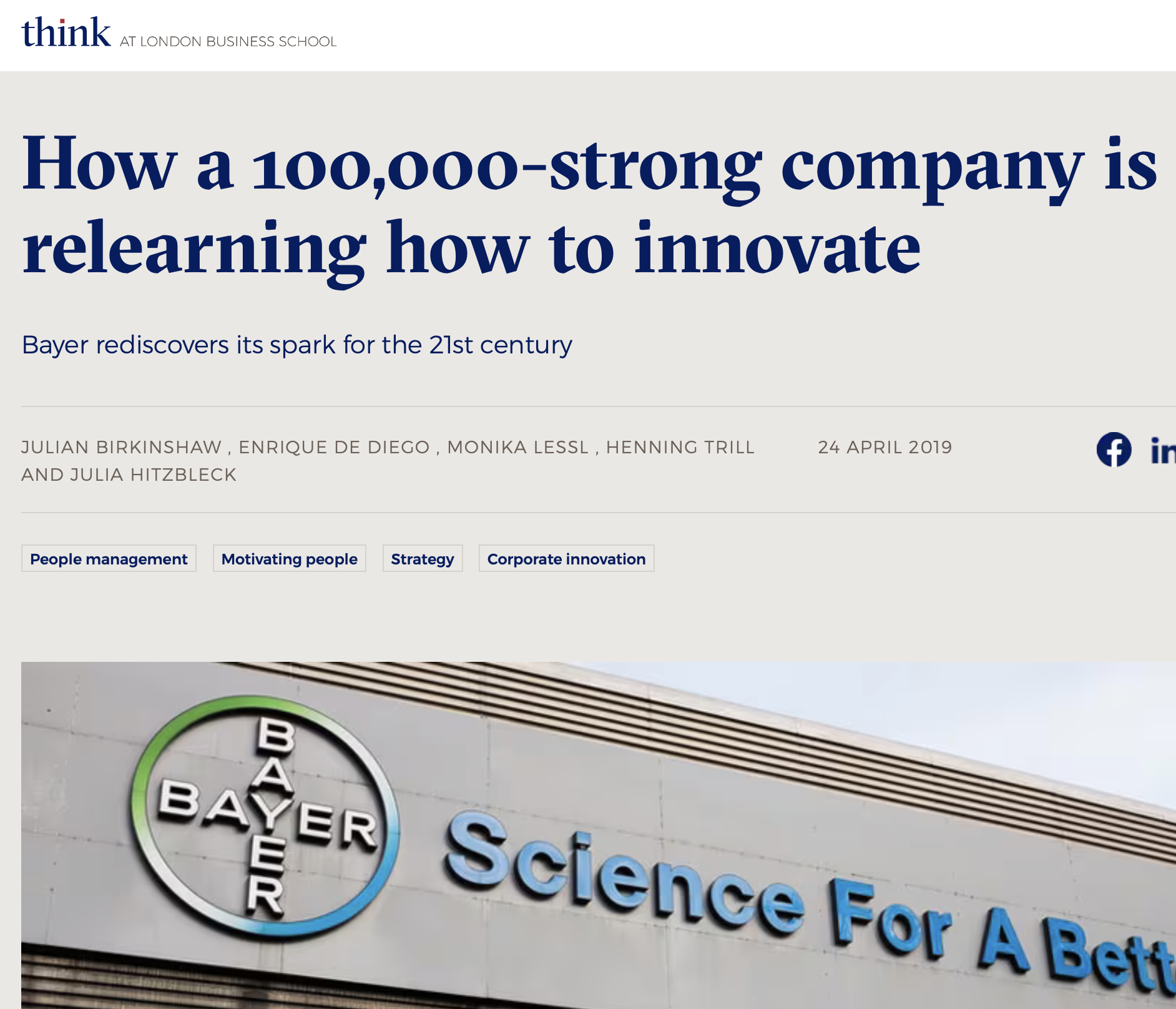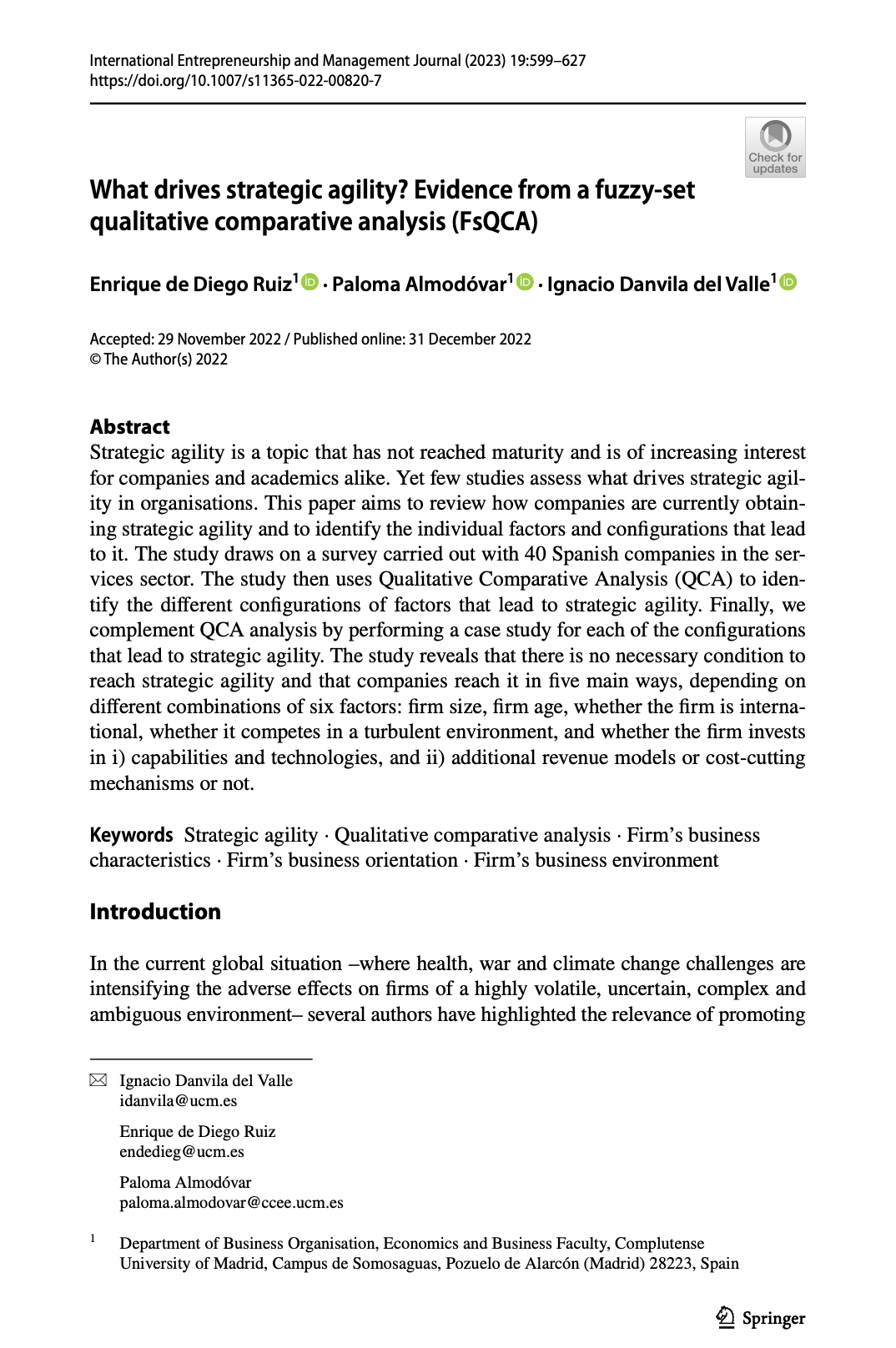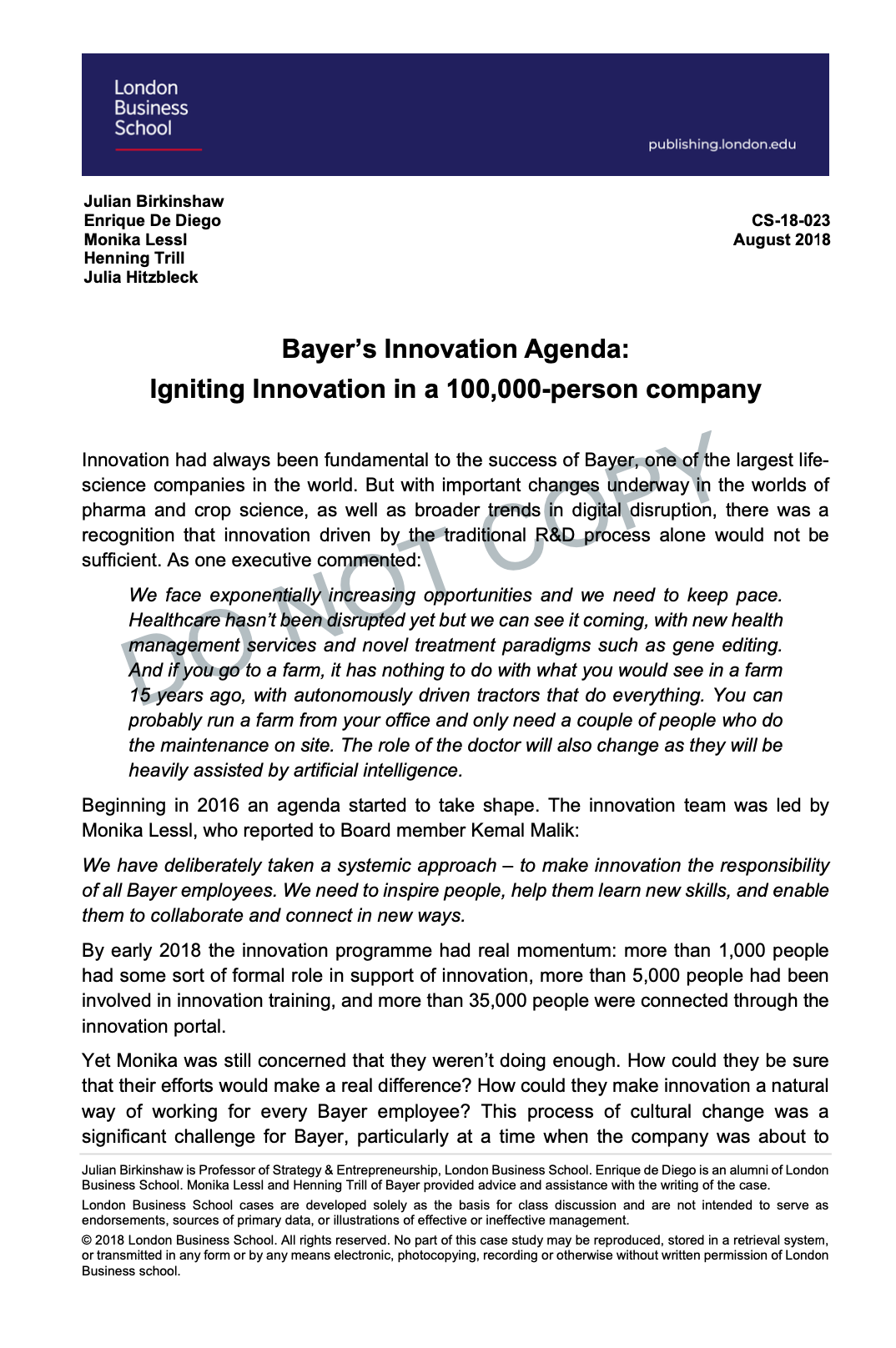
How a 100,000-strong company is relearning how to innovate
This article explains how Bayer is actively investing in innovation and using Systematic Inventive Thinking (SIT) to train their employees
- Publication Date: 24/04/2019
- Language: English
- Pages: 4

